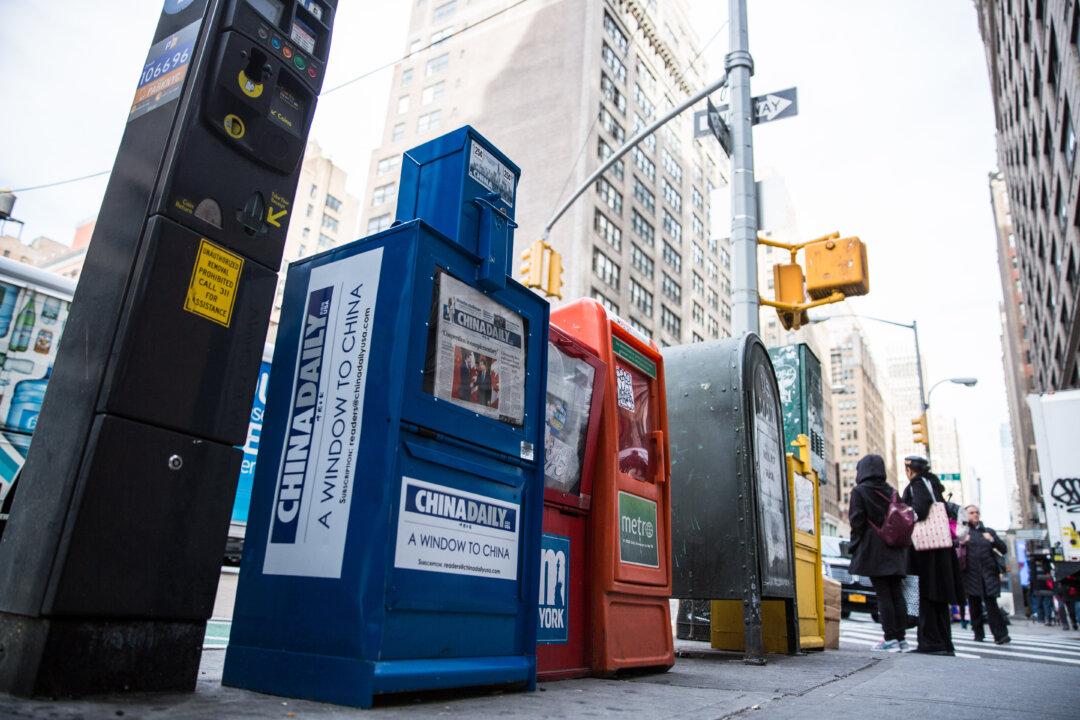A four-page insert in an Iowa newspaper about the escalating Sino–U.S. trade war is the Chinese regime’s latest attempt to influence U.S. public opinion.
Iowa is among the heartland states that are the United States’ main soybean producers: Soybean farmers stand to be the most impacted by China’s retaliatory 25 percent tariffs on U.S. goods, as China is the world’s top soybean consumer.
In 2017, China consumed more than 110 million tons of soybeans, of which it imported 95.53 million tons, or 87 percent of total consumption. Prior to the trade dispute, the United States was among China’s primary trade partners in soybeans.
China Daily, an English-language state-run newspaper, ran a four-page advertorial Sept. 23 in the Des Moines Register—one of Iowa’s top newspapers—with a front-page article about how the trade war has forced Chinese importers to turn to South America instead of the United States for soybeans.
The headlining story was accompanied by an article about a book that documents Chinese leader Xi Jinping’s “fun days in Iowa,” when he visited the state in 1985 and 2012.
Another article is titled “Dispute: Fruit of a President’s Folly.”
The China Daily insert is the latest attempt by Beijing to influence American public opinion and, possibly, the midterm elections in November, given that Iowa is a swing state, with multiple state and federal political offices up for election.
Soybeans have been the Chinese regime’s main weapon in the trade dispute.
Earlier in July, the English-language branch of China’s state broadcaster, China Global Television Network, created a two-minute animated video highlighting that, amid the tariff wars, China is moving away from the United States as a source for soybeans—noting the potential impact on U.S. soybean farmers.
The video points out that the U.S. states that are top soybean producers are among those who voted for Trump during the 2016 presidential election. But they will be “hurt by this [trade] conflict,” the video explains. So, when it comes time for the 2018 midterm elections, “will voters there turn out to support Trump and the Republicans once they get hit in the pocketbooks?” the video asks at the end.
Contrary to what the video claims, China actually faces a supply shortage: Domestic production has dropped significantly as Brazil, its other major soybean trader, sets to finish its harvest and sell out its crop.
Some analysts believe China will still need to import U.S. soybeans—and pay those tariffs—in order to fill its supply gap.
But recent Chinese media coverage proves the extent of Beijing’s efforts at disseminating anti-trade-war information—to a U.S. audience. In May 2017, Freedom House senior research analyst Sarah Cook explained at a congressional hearing that such newspaper inserts by China Daily are part of Beijing’s attempts to spread propaganda through mainstream media.
“Chinese officials and state-media reports have referred to this strategy as ‘borrowing the boat to reach the sea.’ This phrase refers to disseminating Chinese state-media content via the pages, frequencies, or screen-time of privately owned media outlets that have developed their own local audiences,” Cook said.
The timing of the China Daily advertorial is potentially problematic for China. U.S. President Donal Trump signed an executive order earlier this month authorizing sanctions on foreigners who try to interfere with U.S. elections through the distribution of propaganda and disinformation, among other efforts. The sanctions would block all property of the affected parties within the United States.





